Why improve flock fertility?


Synchronising for a shorter lambing period has obvious advantages: more even batches of lambs for easier management during the grazing season and, importantly, reduced labour costs. On-farm labour is one of the biggest fixed costs in a sheep enterprise; the most profitable UK producers have half the labour costs per ewe due, in part, to a condensed lambing period1.

Advancing the breeding season: an earlier lambing time provides an opportunity to utilise spring grass efficiently for lamb production. This then means optimal pasture management and can allow for earlier marketing of the lambs for a faster return on investment. Lambs sold in April and May generate on average a 21% greater return over those sold in the summer months2.

Utilising advanced breeding methods such as Artificial Insemination (AI) and embryo transfer: improved genetics in a flock can help lead to increased profitability. Synchronisation and AI can allow access to superior rams, without the initial purchase costs. A top terminal sire can add £3.50 extra sale value per
lamb per year3.How to improve flock fertility?
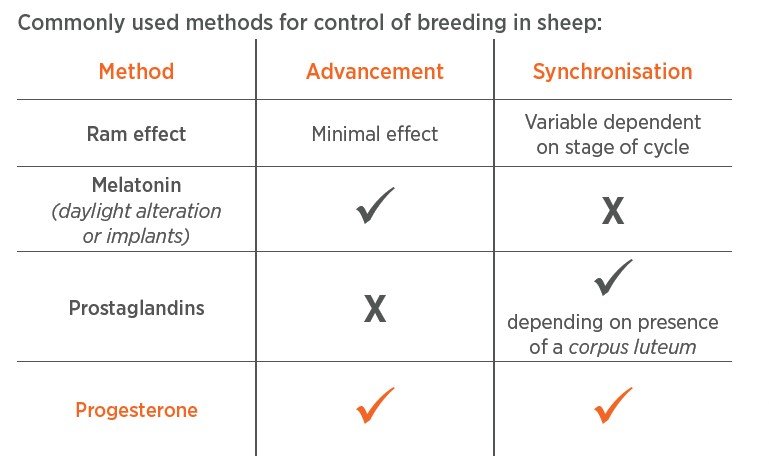
CIDR® OVIS is a “T” shaped device containing 0.35 g progesterone for the induction and synchronisation of oestrus and ovulation in non-cycling ewes during seasonal anoestrus and for the induction and synchronisation of oestrus and ovulation in cycling and in non-cycling ewes for advancing the breeding season.
The progesterone in CIDR® OVIS affects the luteal phase of the oestrus cycle, simulating the natural progesterone produced by the corpus luteum, which then regulates follicular development, oestrus and ovulation.
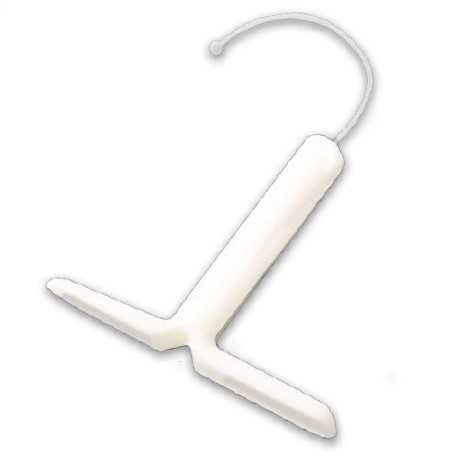
Why Choose CIDR® OVIS?
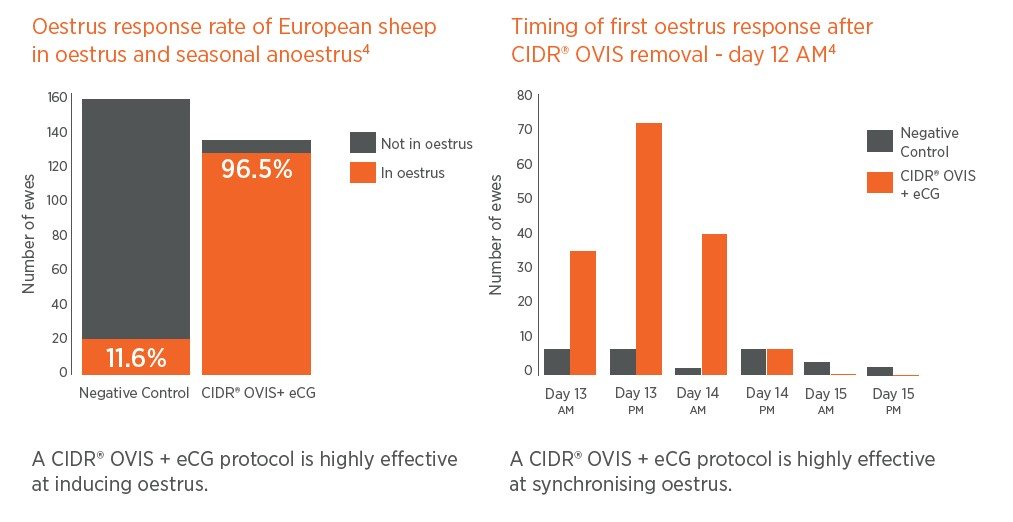
12 day CIDR® OVIS treatment followed by injection with eCG:
- Effective at inducing and synchronising oestrus
- Effective in all stages of the seasonal oestrus cycle (non-cycling, transitional, cycling) under EU field conditions4.
- Provides a valuable tool for advancing the breeding season in seasonal breeding ewes.
In instances where oestrus is synchronised, knowledge of the point of ovulation can help determine the most successful time for AI.
Timing of ovulation using CIDR® OVIS + eCG5
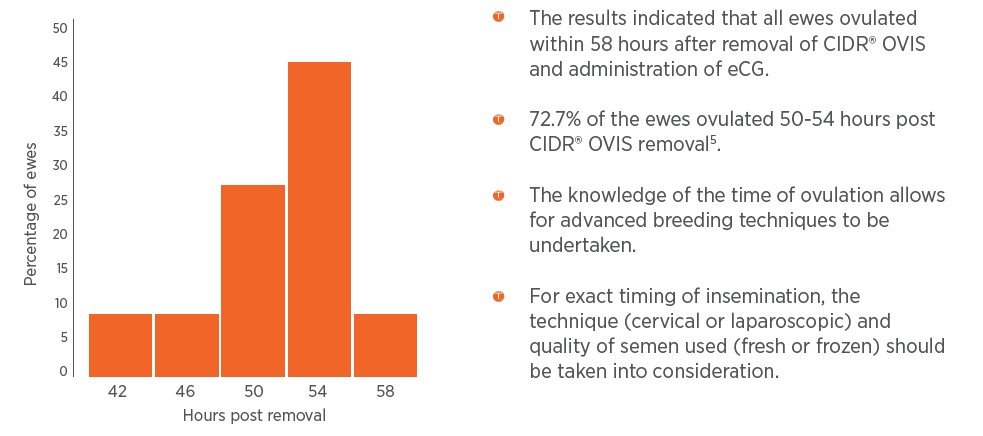
Key benefits
- CIDR® OVIS has been shown to give significantly better pregnancy, fertility, twinning rates, and fecundity (P<0.05) than a flugestone acetate (FGA) sponge6.
- CIDR® OVIS has been shown to have less removal issues (P<0.05) than a FGA sponge6 with 84.5% of sheep showing no, or a clear discharge4.
- CIDR® OVIS has been shown to result in significantly higher lutenising hormone (LH), oestradiol and progesterone levels than an FGA sponge group 6.
How to use CIDR® OVIS
- One device should be inserted into the vagina of each ewe to be treated.
- The device should be left in position for 12 days followed by an injection of eCG administered at device removal.
- The onset of oestrus occurs within 1-2 days after removal.
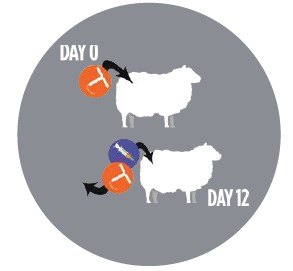
Administration technique:
A device applicator should be used for administration with the following process:
- Ensure that the applicator is clean and dipped in a non-irritant antiseptic solution before use.
- Wearing sterile, disposable plastic gloves, fold the arms of the device and load into the applicator. The arms of the device should protrude slightly from the end of the applicator. Care should be taken to avoid unnecessary or prolonged handling of the product to minimise transfer of the active substance to the operator’s gloves.
- Apply a small quantity of obstetrical lubricant to the end of the loaded applicator.
- Lift the tail and clean the vulva and perineum.
- Gently insert the applicator into the vagina, first in a vertical direction and then horizontally until some resistance is encountered.
- Make sure the removal string is free, press the handle of the applicator and allow the barrel to move back towards the handle. This releases the arms of the device, which will then retain the device in the anterior vagina.
- With the device correctly positioned, withdraw the applicator, leaving the removal string hanging downwards from the vulva.
The applicator should be cleaned and disinfected before being used on another animal.
Removal:
The device may be removed by gently pulling on the tail of the device. On occasions the tail may
not be visible from the outside of the animal, in such cases it may be located in the posterior vagina
using a gloved finger.References
1. AHDB Stocktake report 2016; 2. https://ahdb.org.uk/gb-deadweight-sheep-prices, August 2021; 3. HCC Ram Buyer’s Guide 2009; 4. Zoetis Study A141C-XC-13-019 and A141C-XC-13-020; 5. Zoetis study
A141C-ES-15-055; 6. Swelum, A.A-A et al, 2015, Theriogenology; 84, 498–503.
CIDR® OVIS contains progesterone. POM-V • For further information, please see the product’s SPC or contact Zoetis UK Limited, First Floor, Birchwood Building, Springfield Drive, Leatherhead, Surrey,
KT22 7LP • www.zoetis.co.uk • 0845 300 8034 • customersupportuk@zoetis.com • Use medicines responsibly (www.noah.co.uk/responsible) • Produced September 2021 • MM-16109.- 3rd July 2023
